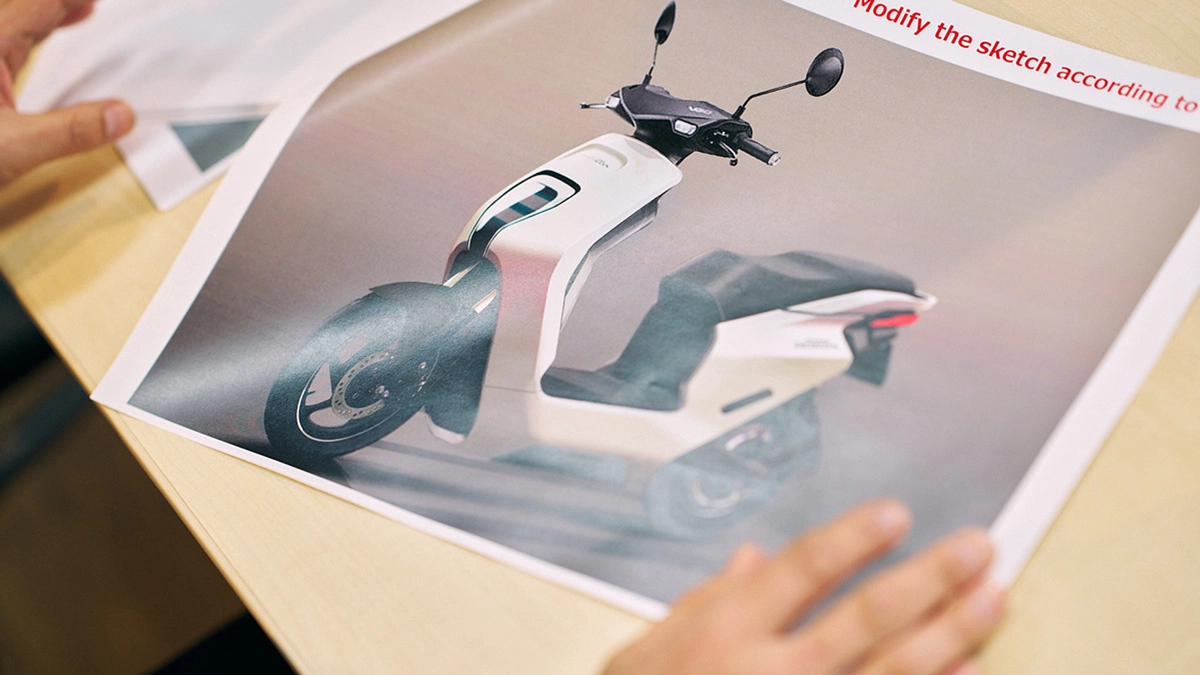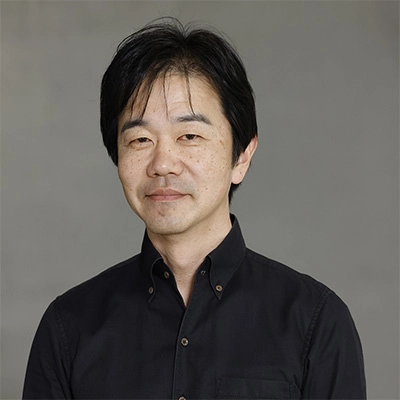
The Thoughts Behind “Simple and Clean”
Can you tell us about your career so far?
Watanabe
I have been involved in motorcycle design throughout my career. I am mainly in
charge of coloring and styling, building up my experience which includes being stationed
in the United States and China. At first, I often worked on what are called “fun” models
and was involved in the design of large cruiser -type motorcycles and road sports
models.
In China, my work focused on scooters and commuters, which are products that emphasized practicality, and I learned design that considered convenience in urban areas. The EM1 e: is a product that made use of this experience. It is based on a model called U-GO that was developed in China, and as the manager-in-charge, I led the design process.


How did you envision the EM1 e:, a Honda electric personal commuter, in terms of the kind of cities it would be used for and how it would be use?
Watanabe
As the project started in China, naturally, we had in mind the streets of
China. However, we wanted it to be used widely without being limited to a specific
region. I think this eventually led to the success of the EM1 e: as a global model.
Ease of Use and High Quality Conveyed Through Design
What do you think are the areas that demonstrates the concept of “simple and clean” in particular?
Watanabe
with
In addition, we sought to enhance visual satisfaction by moderately having wide painted surfaces to give the overall product an impression of consistency and high quality. This balance supports the core of “simple and clean.”
We also paid attention to the details. The rear grab rail has a double structure and the same color as the scooter body for a sense of unity with the scooter while being practical.


Reliability as a Daily Partner
It feels like you were seeking universality that is easy to use for all users. Regarding this point, what were the areas that you paid attention to?
Watanabe
We kept in mind a design that is unisex and neutral in its appearance. At the
same time, we were thorough in making adjustments to aspects such as the space around
the knees, the height of the seat, and the size of the floor. By paying careful
attention to these details, we achieved design and practicality that can be used by a
wide range of customers—regardless of gender—for many years.


Changes and Constants from Adopting an EV Design
Were there issues or joys unique to being an electrified vehicle?
Watanabe
There were definitely differences in design arising from the hardware, but the
essence of creating a motorcycle did not change. Regarding the composition of the
scooter body, in principle, it is similar to conventional gasoline scooters.
Of course, there were new requirements in design because the power unit has changed.


Were there any discoveries or lessons from this design and development?
Watanabe
The essence of creating a product according to the requirements is a mindset
that does not change for a designer. Through this experience, I reaffirmed that we can
eventually achieve significant results by pursuing ease of use for the user amid
detailed restrictions. Going forward, as a designer, I hope to continue to go about this
process while enjoying it.
Profiles

Takeshi Watanabe
Motorcycle and Power Products
Product Designer